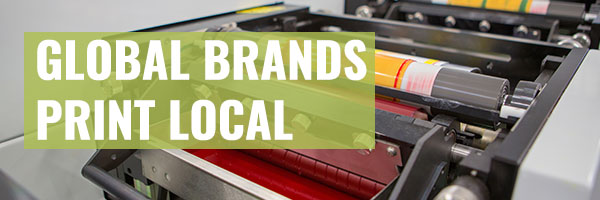Anyone who has been successful in pushing a significant brand across global markets will tell you that truly effective packaging and labeling is an integral component to the growth of a brand.
In today’s consumer-centric world, labeling and printing have become synonymous to branding and customer communication.
“Glocalization” of brands and printing
‘Glocalization’ is a term that has been coined from the act of a global brand going local. ‘Glocal’ brands have been able to perceive similarities in regions in areas of culture, values, and preferences, therefore, increasing their presence in several areas. However, while appealing to regional preferences and needs, the brands maintain consistency in brand image and universal value, making them more attractive and desirable to customers.
New Printing Technology
In recent years, technology has mostly changed how brands are packaging their products. Printing, being one processes in packaging, has equally evolved. Global brands have a stronger shot in the market given that they enjoy economies of scale, giving them broad access to volume and market reach.
To add to this, they can adapt to the advancements in printing technology, faster than smaller businesses can. This gives them an edge.
Digital vs Flexo
Flexography is a comparatively old printing technology (compared to digital, that is) which uses rubber or plastic plates on rotaries and fluid inks or dyes for printing on fabrics and impervious materials such as plastics, as well as on paper. Flexo printing can really be used on just about any material; from a film, paper, foil to corrugated materials; making it a popular choice for brands looking for a variety of brand materials.
Digital printing, on the other hand, offers quick turnarounds and low costs, making it ideal for brands looking to execute short-term campaigns and projects.
Take, for example, the special edition Coke cans (like Christmas Coke cans) have also been made easier because of the digital printing technology. One of their most popular campaigns was “Share a Coke,” in which the company distributed drink cans with names of customers printed on them to make customers feel like the consumption of the product was personal. The use of cans for packaging enabled printing by the digitally shrinking of wrap and paper labels which was more cost-effective rather than if they had done the campaign using the old bottling kind of packaging and printing. Additionally, localizing their printing during this campaign helped them save on the costs associated with external printing and shipping, and therefore they could channel that extra saving into other enterprise functions.
Going Local.
Perhaps the largest case for global brands to print locally is the cost factor. Brands looking to ship products globally must take into consideration those shipping costs. Is it more cost-effective to have products packaged and printed locally, rather than spending money to ship across the world? Often times, brands will find a local supplier/manufacturer for products in situations like this, and local printers play a major role here.
Major brands looking to execute specific campaigns or short-run test products in a new region should definitely look into printing and packaging locally; it’s cost-effective and (when the PR is done right) can have a surprising impact on local market share.




